Tom's Hardware Verdict
WD’s Black AN1500 delivers high bandwidth and speed that rival’s Gen4 competitors, thanks to an enterprise-grade RAID controller, and comes with a price tag to match.
Pros
- +
Aesthetic appeal
- +
Competitive performance
- +
5-year warranty
- +
Software suite
Cons
- -
Not quite as fast as native Gen4 SSDs
- -
Takes up 8 PCIe lanes for full performance
- -
Power hog
- -
Runs hot, but not too hot
- -
Expensive
Why you can trust Tom's Hardware
WD's Black AN1500 is a high-end SSD built for gamers who want PCIe Gen4 performance but lack the support for the standard on current-gen platforms -- we’re looking at you Intel. Containing two WD Black SSDs in RAID 0, plus customizable RGB lighting, it offers high-performance with looks and a price to match.
Got an ‘old’ PCIe Gen3 rig, but want Gen4 performance? Are you also a big RGB fan? WD’s Black AN1500 is probably the SSDs you’ve been dreaming of. This blazing-fast add-in card (AIC) eliminates the headaches of traditional NVMe RAID by providing a simple plug-and-play experience that is fully bootable. Built with an enterprise-grade NVMe RAID controller and two of the company’s high-speed WD SN730 NVMe SSDs inside, WD’s Black AN1500 seamlessly integrates into your system while providing all the gigabytes per second you could ask for on Gen3 hardware.
Specifications
| Product | Black AN1500 1TB | Black AN1500 2TB | Black AN1500 4TB |
|---|---|---|---|
| Pricing | $299.99 | $549.99 | $999.99 |
| Capacity (User / Raw) | 1000GB / 1024GB | 2000GB / 2048GB | 4000GB / 4096GB |
| Form Factor | HHHL AIC | HHHL AIC | HHHL AIC |
| Interface / Protocol | PCIe 3.0 x8 / NVMe 1.3 | PCIe 3.0 x8 / NVMe 1.3 | PCIe 3.0 x8 / NVMe 1.3 |
| Controller | WD Architecture | WD Architecture | WD Architecture |
| DRAM | DDR4 | DDR4 | DDR4 |
| Memory | WD 96L TLC | WD 96L TLC | WD 96L TLC |
| Sequential Read | 6,500 MBps | 6,500 MBps | 6,500 MBps |
| Sequential Write | 4,100 MBps | 4,100 MBps | 4,100 MBps |
| Random Read | N/A | N/A | N/A |
| Random Write | N/A | N/A | N/A |
| Security | N/A | N/A | N/A |
| Endurance (TBW) | N/A | N/A | N/A |
| Part Number | WDS100T1X0L-00AUJ0 | WDS200T1X0L-00AUJ0 | WDS400T1X0L-00AUJ0 |
| Warranty | 5-Years | 5-Years | 5-Years |
WD’s Black SN1500 is available in capacities of 1TB, 2TB, and 4TB and at roughly $0.23-$0.27 per GB, the AN1500 fetches a premium price, although acceptable given its high capacity and performance. WD rates the Black AN1500 to deliver up to 6.5/4.1 GBps read/write speeds under sequential requests over its PCIe 3.0 x8 interface.
These performance numbers don’t tell the whole story, however. Like most TLC-based SSDs, WD Black AN1500’s ratings are based on an SLC cache and will degrade under large file transfers that exceed the cache, but due to its robust architecture, it’s performance will still remain strong when writing directly to the TLC. When the transfer ends, the architecture’s more aggressive evacuation policy will help to quickly maintain the high availability of SLC blocks to keep most writes directed to the SLC for higher endurance, too.
While most SSDs come with finite endurance ratings within their warranty, we were unable to get ahold of any official endurance ratings on the Black AN1500 from the company. We do know, however, that it comes backed by a five-year warranty. This is potentially great news to reassure avid videographers as WD will warranty the device regardless of the number of writes performed.
Secure erase is unsupported, since the device is preconfigured as a RAID 0 with no way to change it by the end-user. Or at least, we were unable to secure erase the device and are still waiting to hear back from the company on whether or not it’s officially supported. AES 256-bit hardware encryption is also unsupported. But, the AN1500 does support Trim and S.M.A.R.T. data reporting.
Software and Accessories
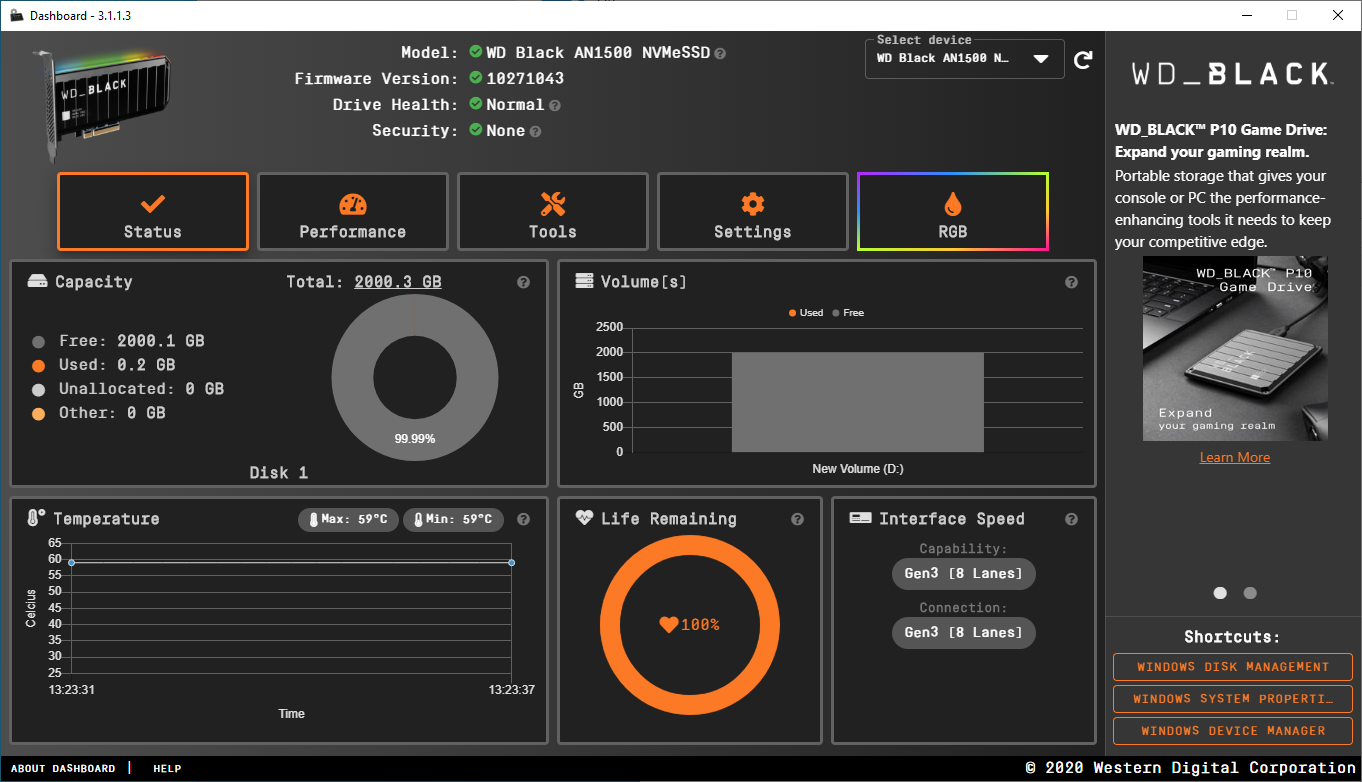
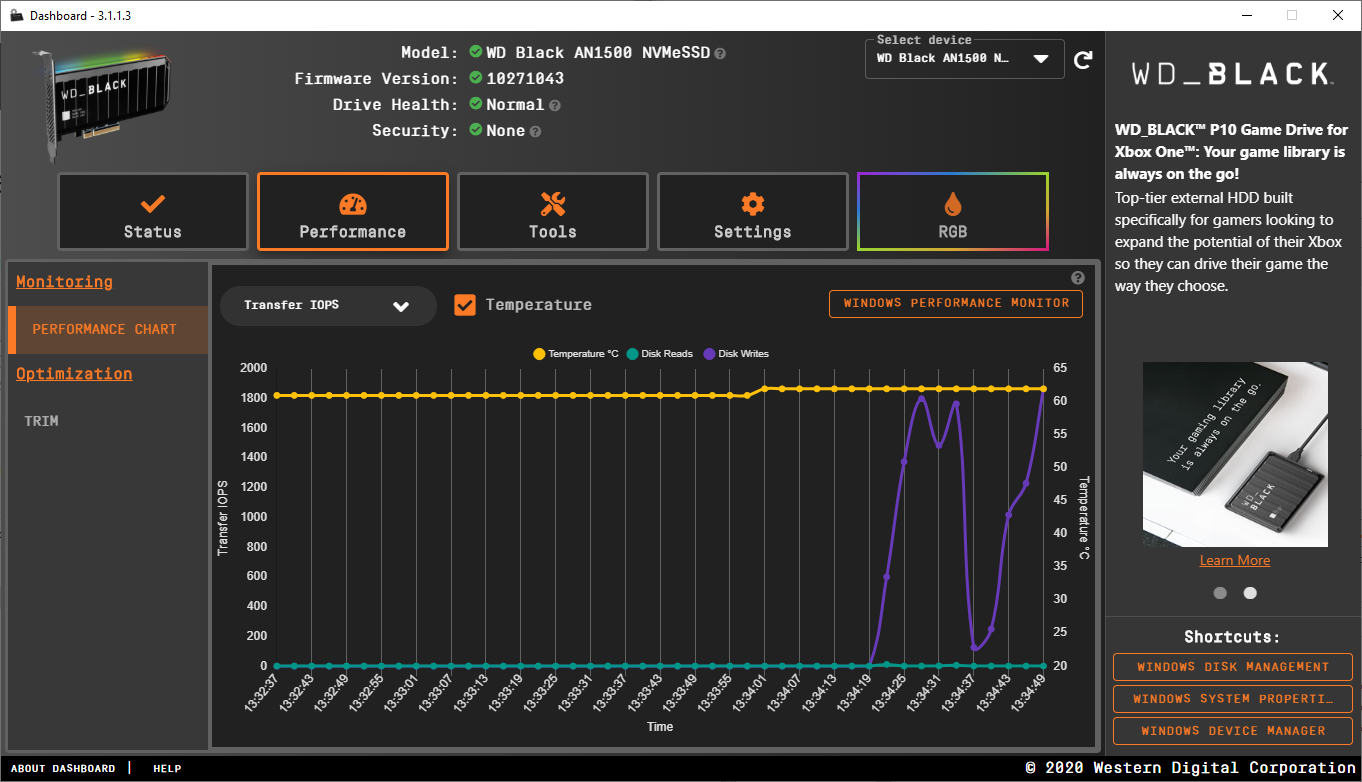
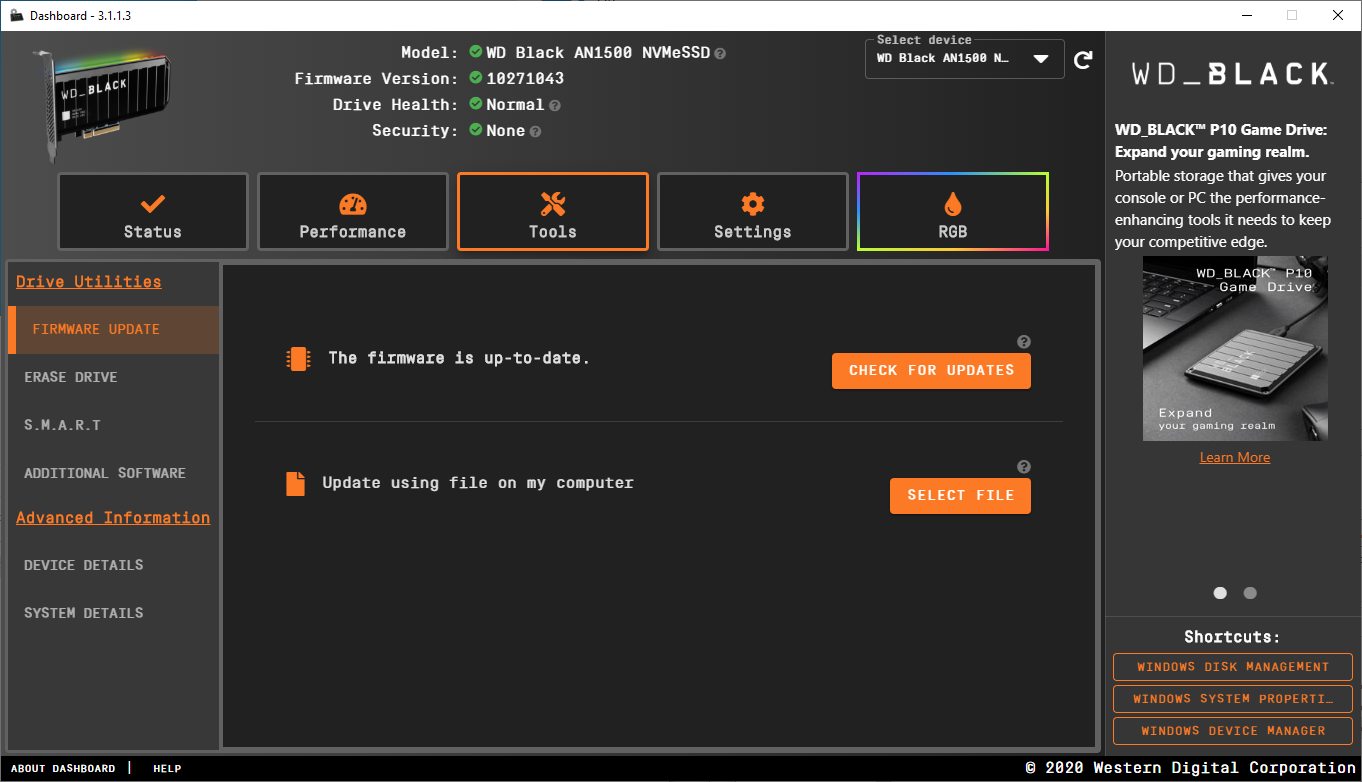
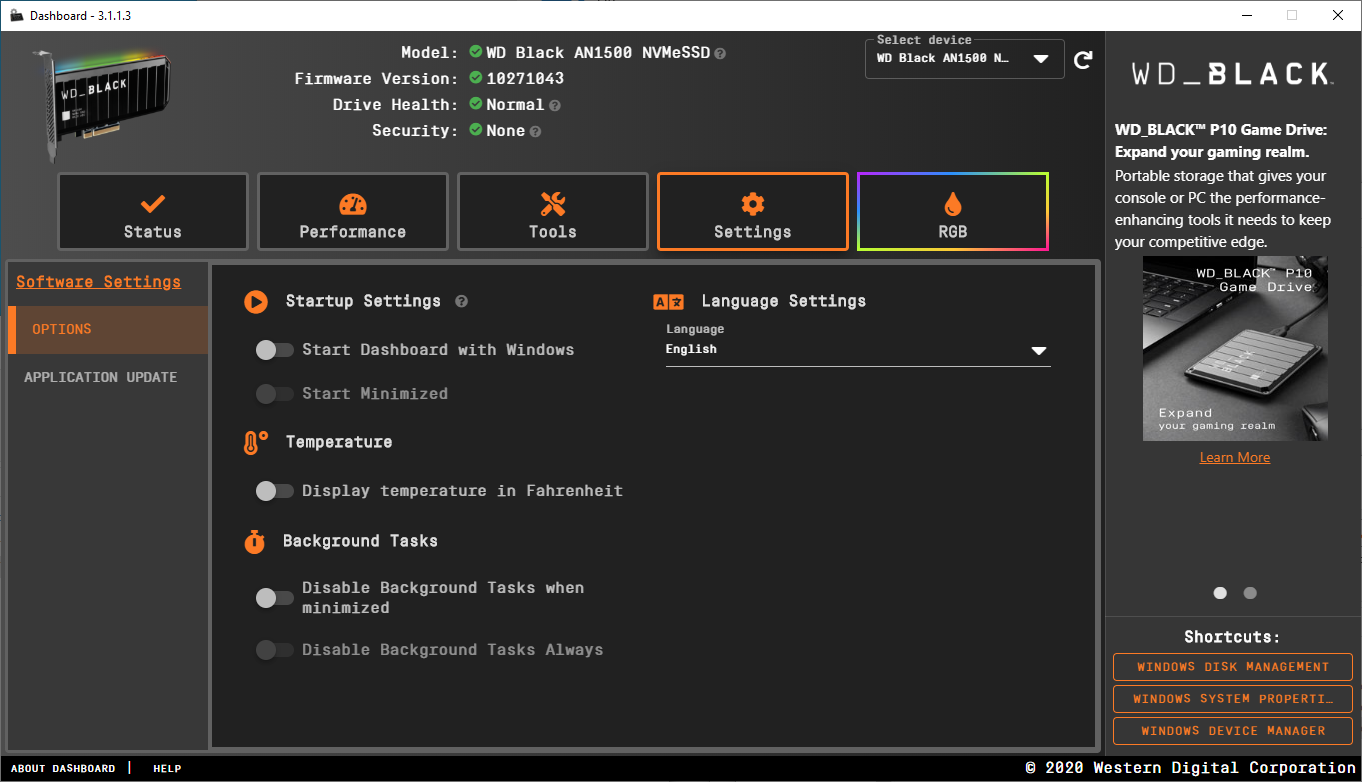
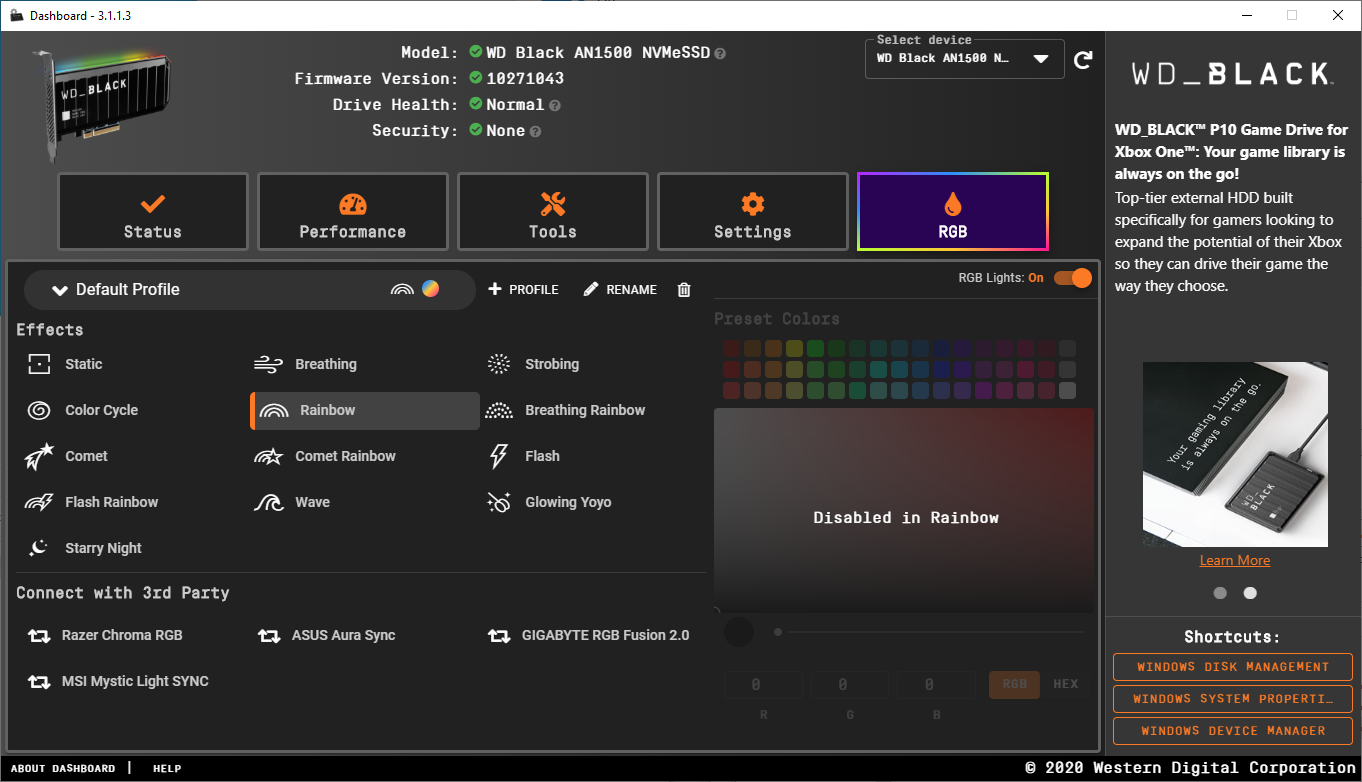
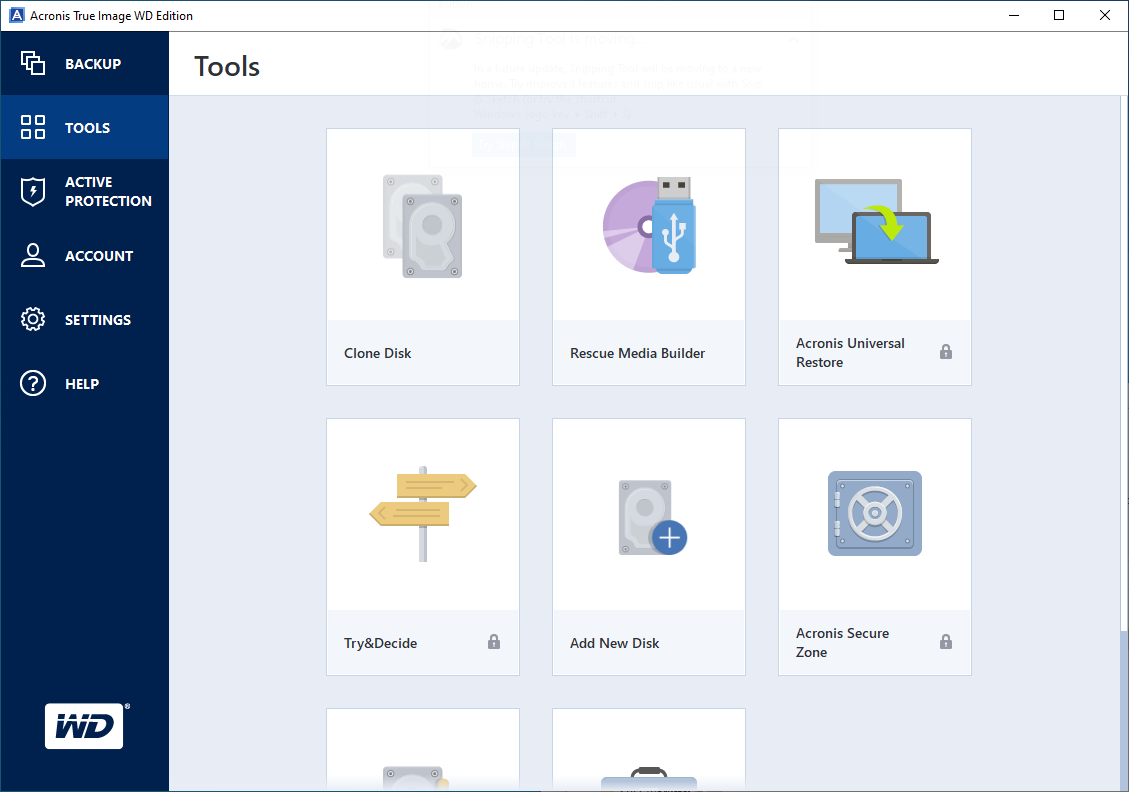
WD supports the Black AN1500 with an SSD Dashboard and Acronis True Image 2020. True Image simply lets you clone your data over to the SSD, the SSD dashboard offers a lot more functionality.
Get Tom's Hardware's best news and in-depth reviews, straight to your inbox.
Capacity, temperature, life remaining and even the interface link speeds are shown on the status page, while a live performance analysis chart and other tools are located in the other panels. The SSD Dashboard also has an RGB control panel, with 13 LED pattern effects. It's also compatible with most motherboards' RGB control software, like Asus' Aura Sync, Gigabyte's RGB Fusion, and MSI's Mystic Light Sync.
A Closer Look

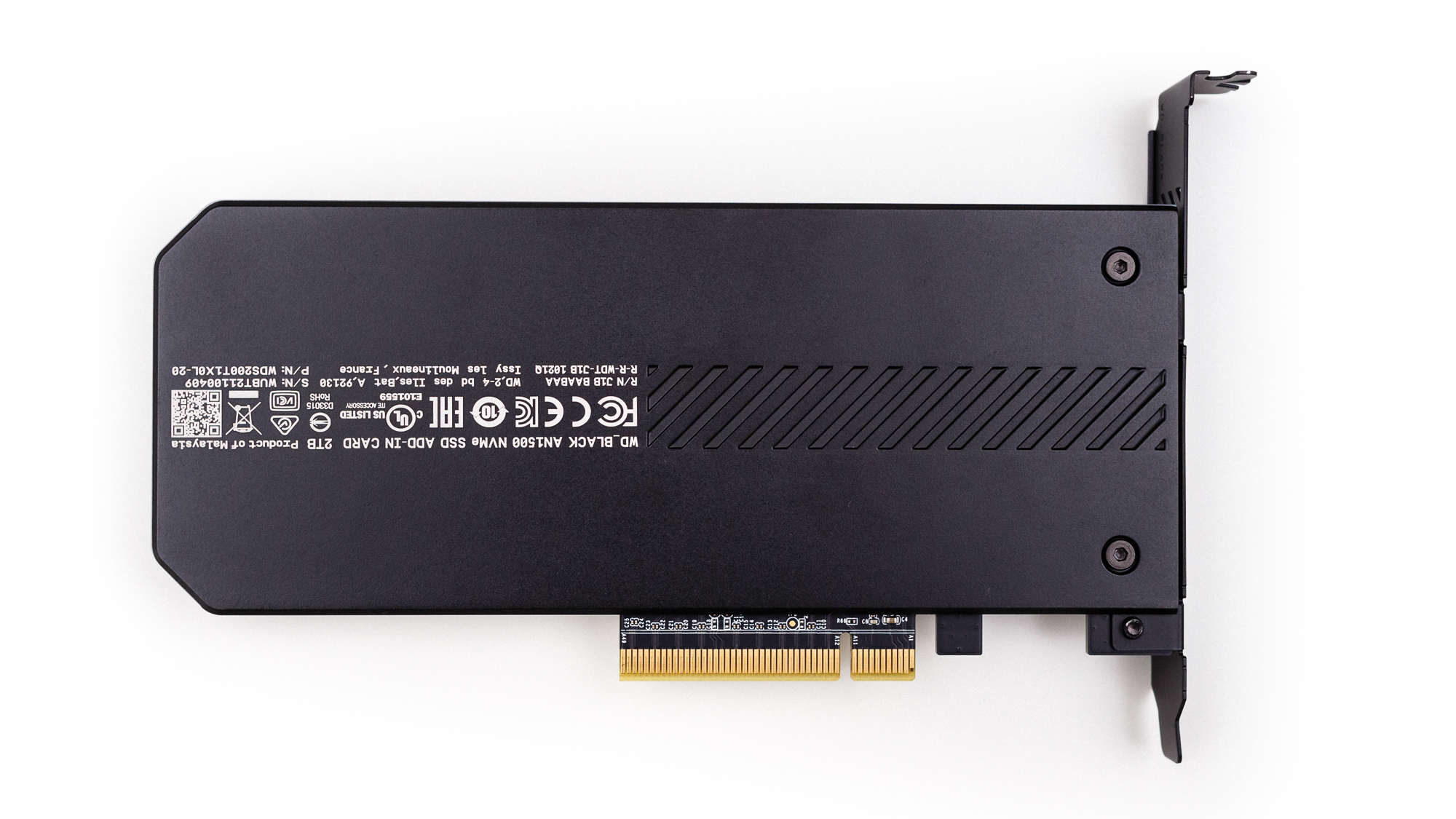
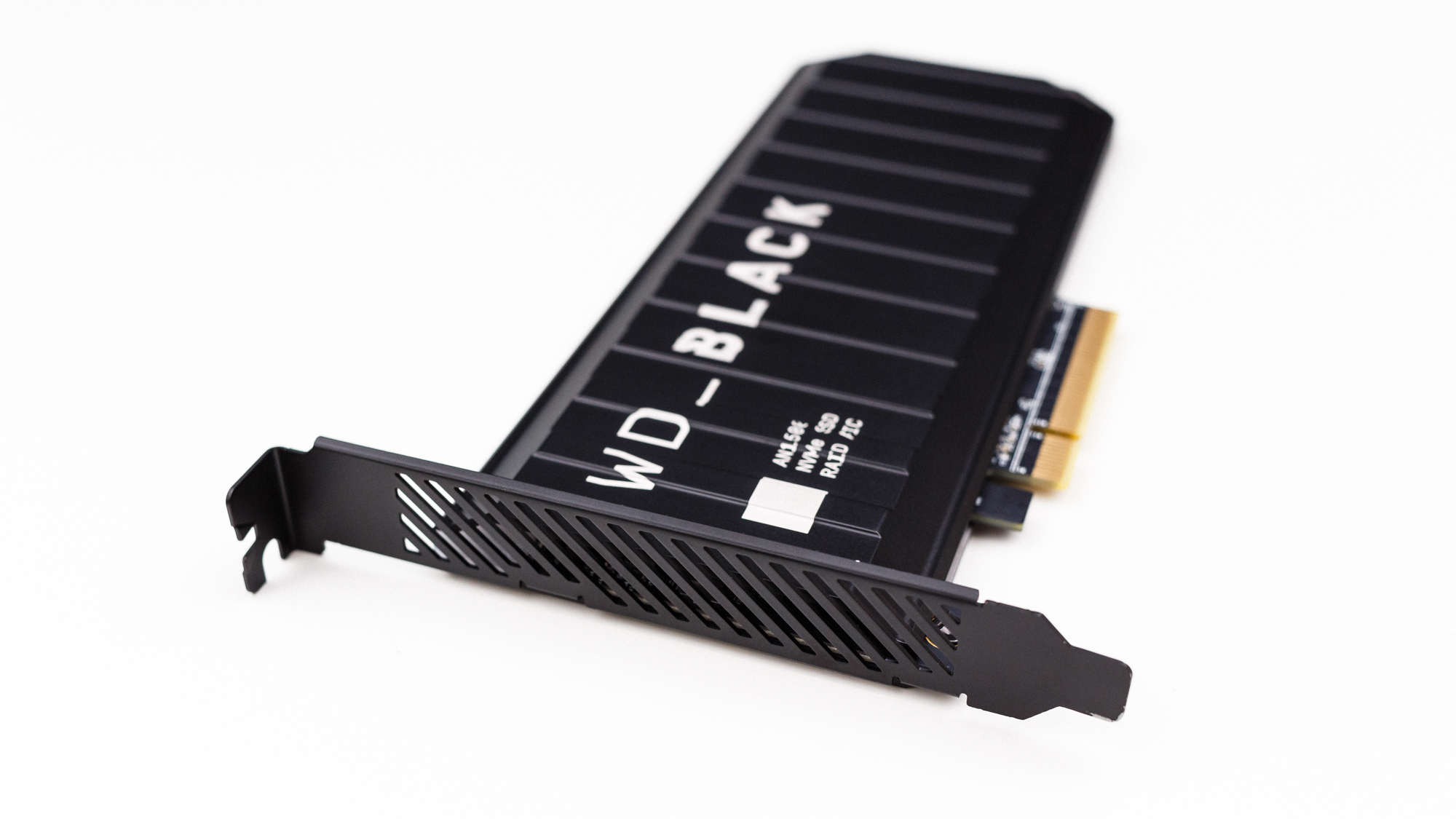
WD’s Black AN1500 comes in a half-height add-in-card form factor and interfaces with the host over an up to PCIe 3.0 x8 link using a Marvell 88NR2241 NVMe RAID controller. Measuring over 13mm thick, made of metal, and weighing in at roughly half a pound, the device is quite robust and well-engineered to keep cool, even under the most strenuous loads. The edge lighting is elegantly diffused and utilizes 16 LEDs.
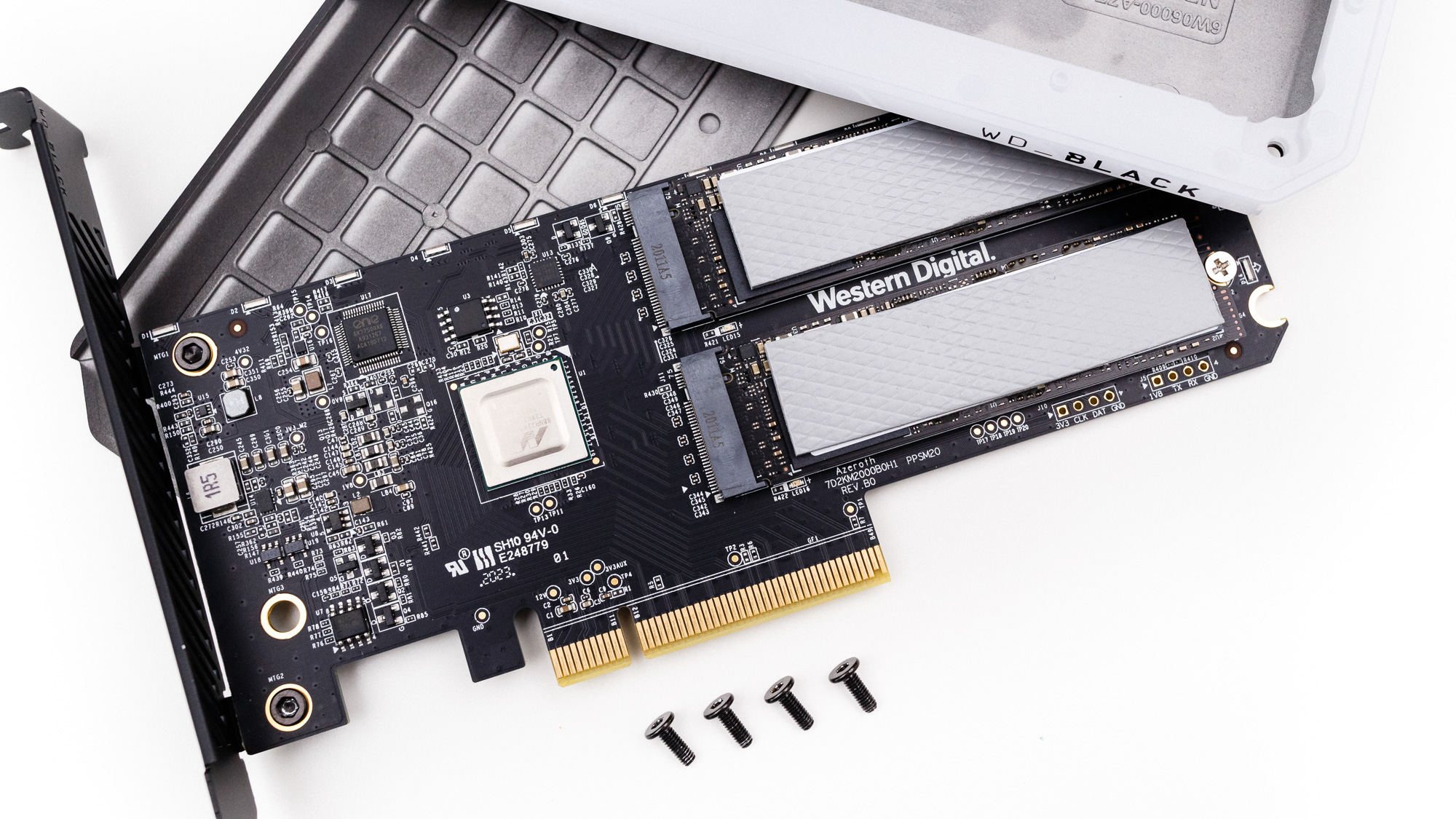
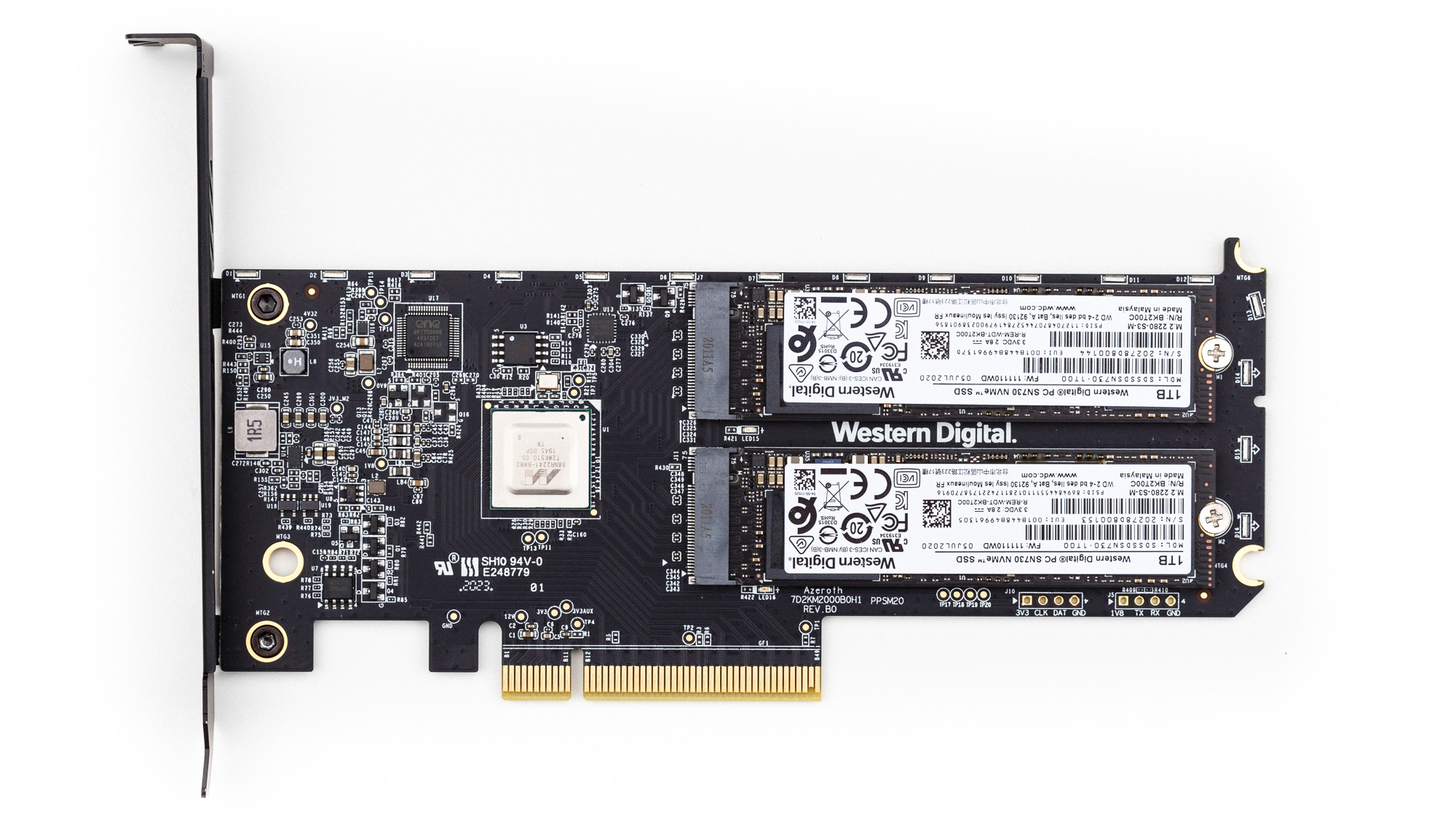
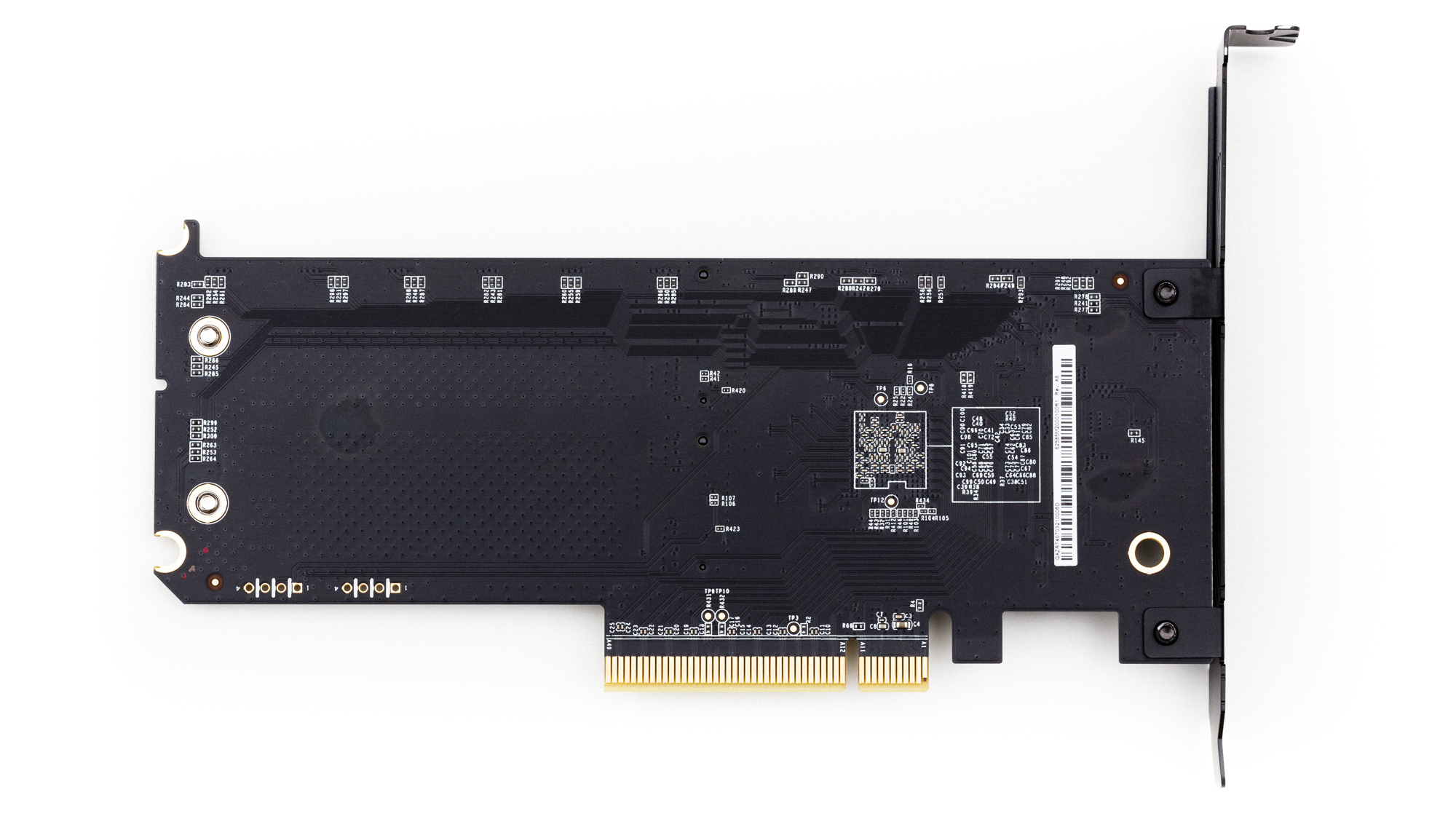
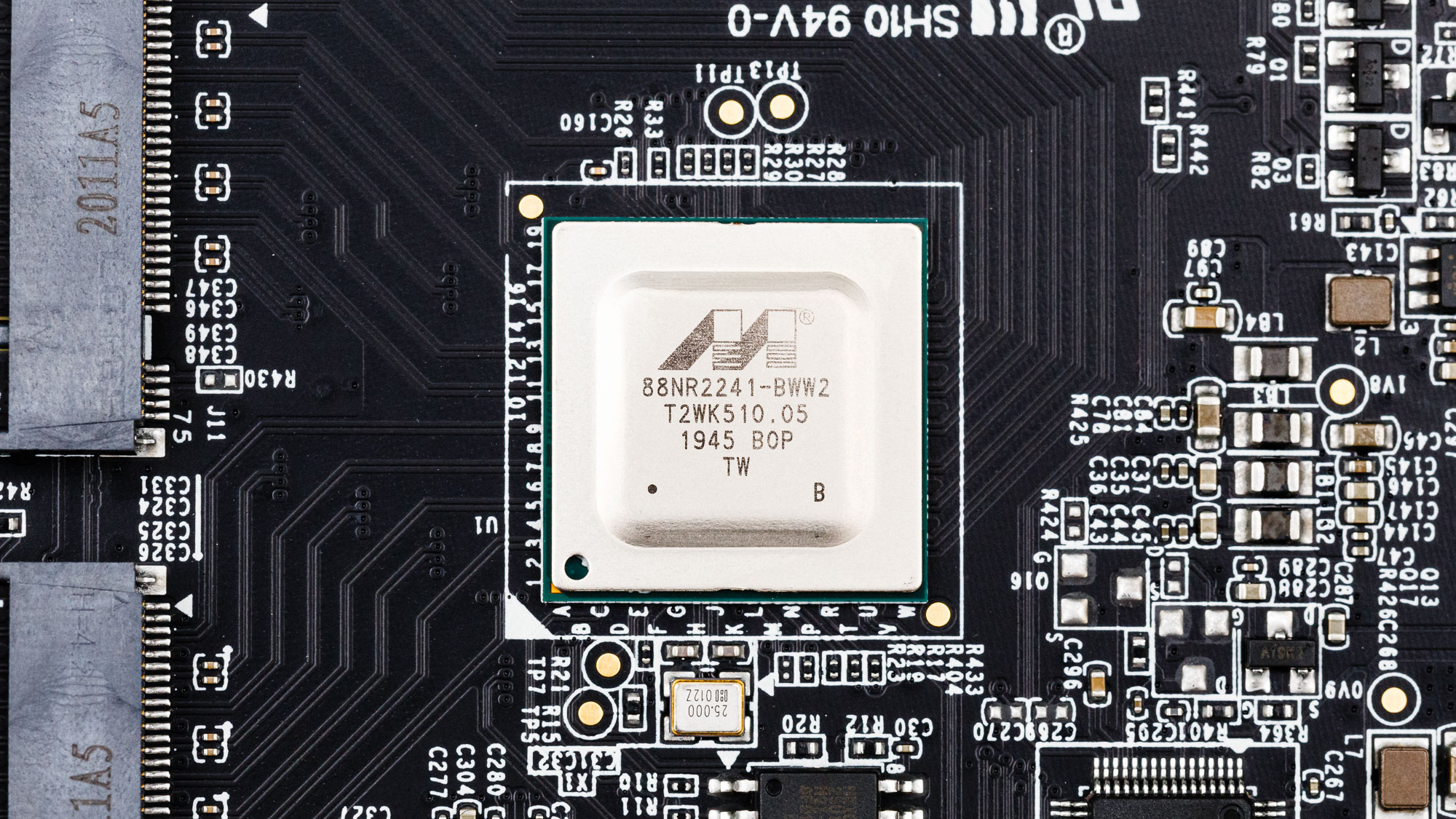
WD’s Black AN1500 is an NVMe SSD that leverages two WD SN730s in RAID 0. Each SN730 has a robust triple Arm CPU-based controller architecture that utilizes a DRAM cache to help ensure responsive performance. For the AIC, the company added an 8Gb Micron DDR4 chip onto each of the 1TB SN730s. WD disabled all power management options on the SSD, so the device always operates in a fully active 0 power state, gobbling up power and producing excessive heat at idle especially. But then again, a product like this isn’t about efficiency, it’s all about speed.
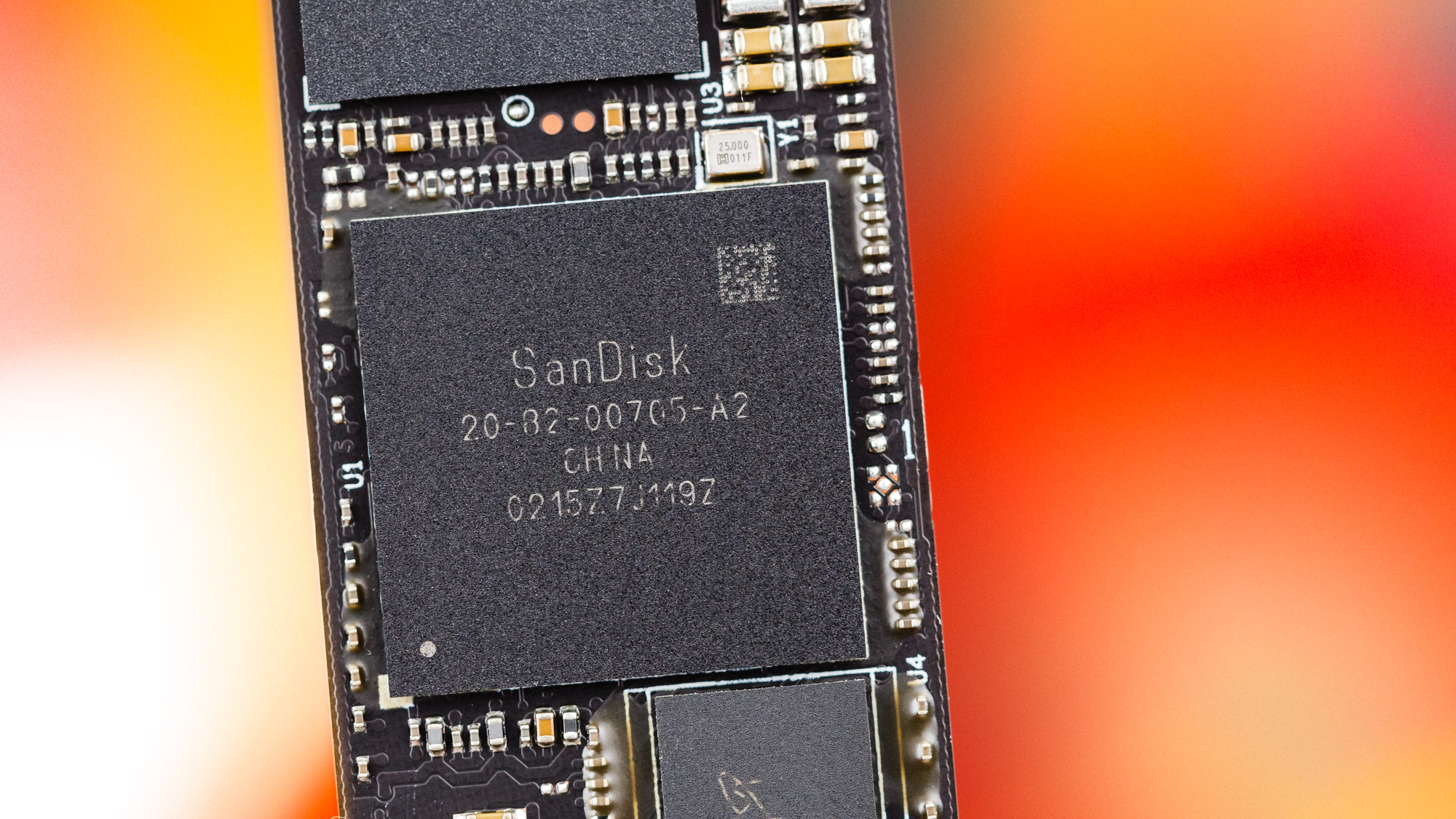

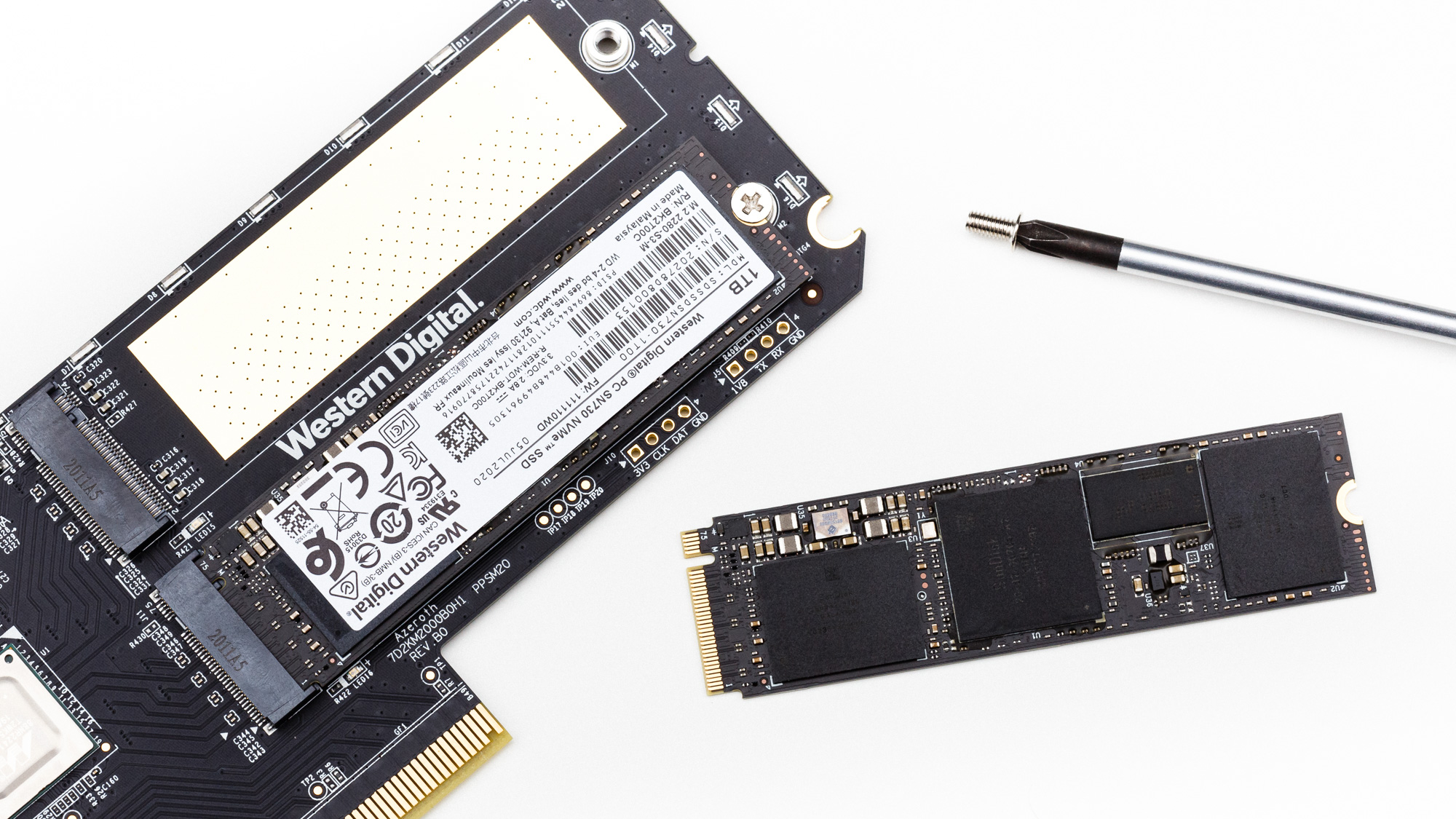
WD’s NVMe 1.3 SSD controller ensures data integrity and reliability with a multi-gear hardware Low-Density Parity-Check (LDPC) ECC engine. The main gear at which it will operate is optimized for high throughput and lower power than older BCH, while the successive gears offer stronger error correction capability and are typically used only for older, high bit-error pages. Additionally, the company overprovisioned the SSDs by roughly 9%, so that some of the space can be used as RAID-like protection for full multi-page recovery after years of abuse.
Of course, the SSD wouldn’t be so fast if it weren’t for some of WD’s latest BiCS4 TLC NAND flash. With a design that is based on scaling a charge trap cell, the BiCS4 flash on this SSD scales up to 96 word-line-layers. In fact, there are more select and dummy layers that bring the total layer count up to 109, and it utilizes string stacking.
The 1TB and 2TB models of the AN1500 will feature the 256Gb dies. And the 4TB 512Gb dies both feature a two-plane design for independent access and interface, with the controller over eight NAND flash channels at Toggle DDR 3.0 speeds of up to 800 MTps, while consuming 1.2V. This flash comes with roughly half the planes count of the current top-contending flash from Micron, SK hynix, and Samsung. BiCS5 will come with a four-plane layout, though, as well as Circuit Under Array (CUA) design elements to achieve high-bit density and performance.
To improve BiCS4’s program performance over BiCS3, the company had to implement a few new ideas, including a string-based start-bias control (SSBC) scheme as well as smart Vth tracking read (SVTR) to improve the retry read performance, along with a shielded-bitline current-sense (SBL) scheme, too.
MORE: Best SSDs
MORE: How We Test HDDs And SSDs
MORE: All SSD Content

Sean is a Contributing Editor at Tom’s Hardware US, covering storage hardware.
-
nofanneeded We already have barebone NVME cards that can raid 4 NVME SSD , and used 16 lanes as well . I dont see This product can compete against that .. I am puzzled at WD choices ...Reply -
Grindayzier Reply
This will work good in my 6 core LGA 2011 rig :)nofanneeded said:We already have barebone NVME cards that can raid 4 NVME SSD , and used 16 lanes as well . I dont see This product can compete against that .. I am puzzled at WD choices ... -
gg83 I just want the empty shell. Ive wanted an rgb add in card for a while. i just want the lights. I could give a crap about 300 for 1tb! what a joke!Reply -
jesselafantaisie Wouldn't this force gpu to 3.0 8x therefore how could this be designed for gamers?Reply
